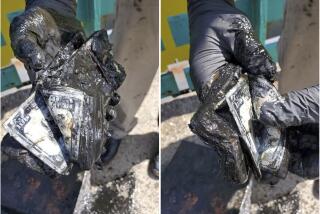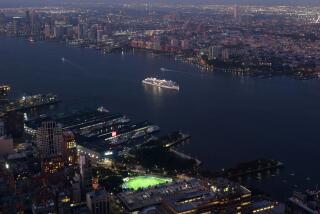The return of a native New Yorker: whales
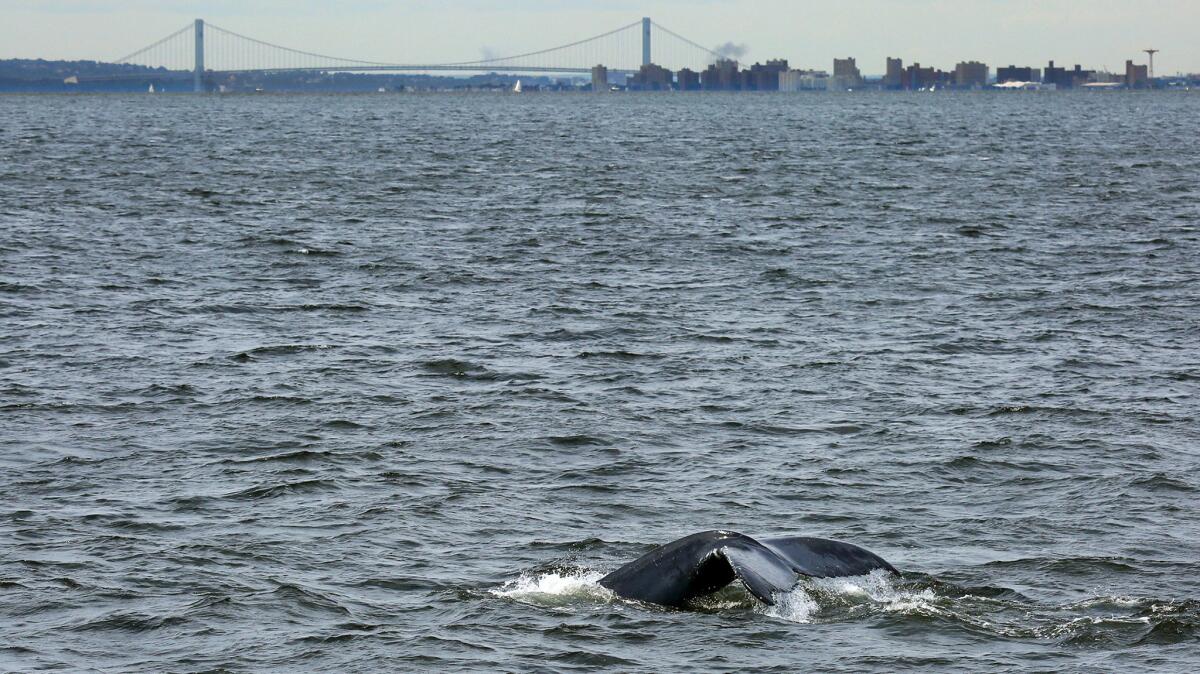
Reporting from NEW YORK — On a gray summer afternoon a double-decker ferry cruised around New York’s Rockaway Peninsula as rain drove down in sheets. Undaunted, the passengers, including 8-year-olds from Brooklyn celebrating a birthday, looked out the windows, hoping to glimpse their quarry.
A voice came over a weak microphone. “You’re going to help all of us find whales,” Catherine Granton said.
Yes, whales. In New York.
Granton told the passengers to look for whitecaps, where whales might be breaking the water’s surface.
Granton is an educator for the nonprofit Gotham Whale, which, together with American Princess Cruises, has been tracking humpbacks off the coast of New York City since 2011, after fishermen began reporting sightings. To date, the organization has cataloged 60 individual humpback whales in the area.
The whales aren’t alone. Dolphins and seals are now commonplace in New York Harbor, and a project to restore oysters to what was once known as “the oyster capital of the world” is yielding new oyster reefs in the New York-New Jersey estuary.
“What’s happening is they’re returning to waters that they frequented in the past,” Granton said.
New York was once home to abundant marine life. When Henry Hudson sailed into the harbor in 1609, it contained an estimated 350 square miles of oyster reefs, which served as a natural water filter, storm barrier and commercial resource. Oysters were so plentiful their shells were used to pave some streets, said Carmen Nigro, a historian at the New York Public Library.
Whales, too, including the fin, right, sperm and humpback, were once plentiful. But hunted for their blubber, many species veered toward extinction by the early 20th century.
Hundreds of years of industrial pollution, raw sewage and dredging decimated the marine populations. Today two of New York’s waterways — the Gowanus Canal and Newtown Creek — are federal “superfund” sites that still need major cleanup.
But ever so slowly, the waters around New York have begun to recover.
In 1972 Congress passed the Clean Water Act, which banned dumping pollutants into waterways, and the Marine Mammal Protection Act, which prohibited the “take” of any marine mammal, including dolphins, seals and whales. Local advocates like Riverkeeper, the Hudson River Foundation and the late folk singer and activist Pete Seeger also advanced cleanup efforts in New York.
As waterways became cleaner, they once again became rich with nutrients, sustaining algae and plankton, which in turn feed menhaden, a key forage fish, said Paul Sieswerda, director of Gotham Whale. In 2012, the Atlantic States Marine Fisheries Commission capped the allowed take of menhaden.
The result: whale watching with skyscrapers in the background. “Who knows what this is?” Granton asked the 8-year-olds, passing around a long comb-like object with hairy fringes.
“Baleen,” piped up the birthday boy, Leo Mudd.
Granton gave him a surprised look.
“It’s not his first time,” the boy’s mother, Lisa Hickey, said.
It was his third. Both times before, he had seen humpbacks, including one that seemed to play next to the boat for hours. “Basically by the end, they were bored,” Hickey said of the kids.
But this day an hour passed with no whales. Then another. Still no whales.
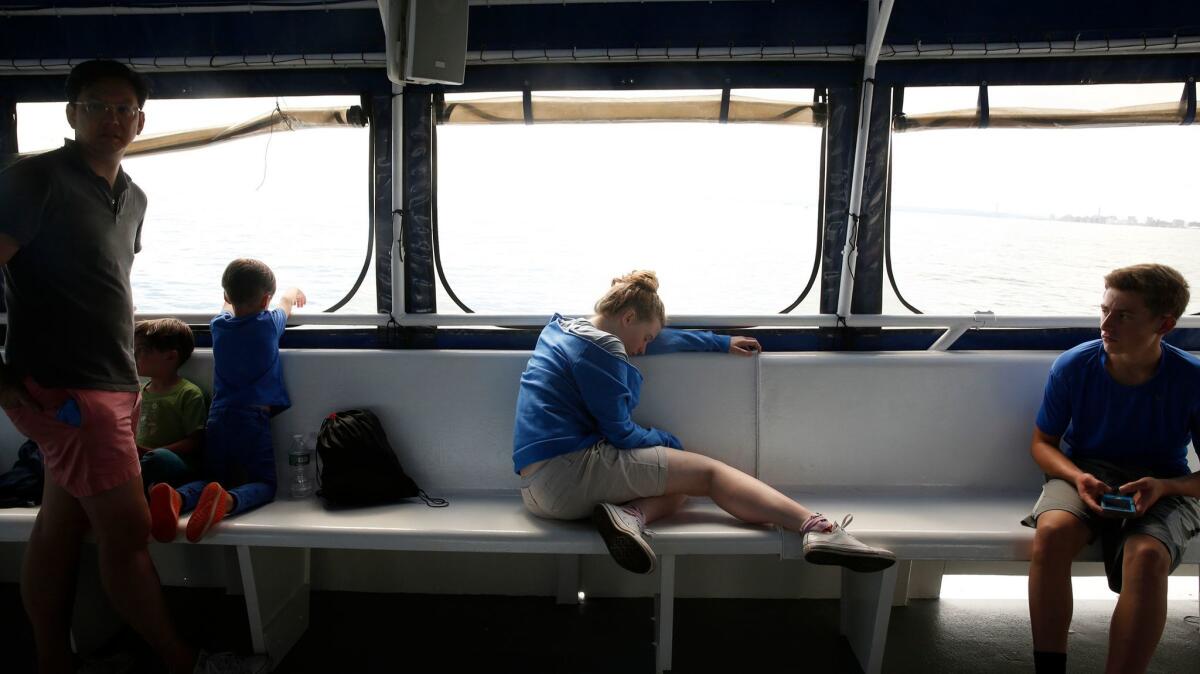
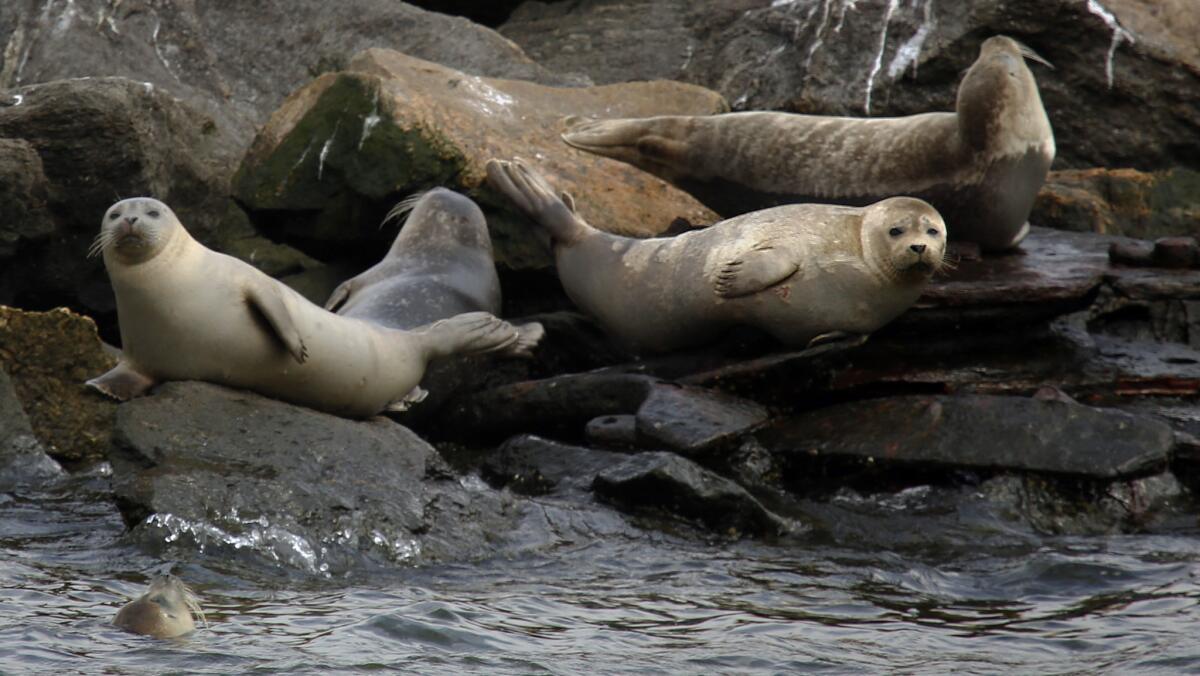
One group of humpbacks typically breeds in the Caribbean during winters and migrates to the Gulf of Maine in summer. These whales have increasingly been seen in the mid-Atlantic in recent decades, said Howard Rosenbaum, director of the Ocean Giants Program at the Wildlife Conservation Society. Other whales, including the fin and sperm, also are commonly spotted off Long Island.
But it wasn’t until 2010 that humpbacks began to be reported farther west, off New York City.
In 2011 there were five sightings of three whales, Sieswerda said. The next year there were 15 sightings. The year after that, 33. Sightings plateaued at around 100 in 2015 and 2016, but Sieswerda said he expects this year to surpass that.
Researchers don’t know for sure if the increase is statistically significant or what’s driving it.
“You could be seeing the product of environmental legislation, cleaner shores, better fishery management, population increases.… All of these factors may have contributed to the humpbacks being seen or spending more time here,” Rosenbaum said.
Pete Malinowski, director of the nonprofit Billion Oyster Project, said more New Yorkers are paying attention to the rivers and ocean. “Most New Yorkers don’t identify as living on the water even though most streets end at the water’s edge,” he said. “But since the harbor’s cleaned up so much … there’s a growing group of people who understand that the harbor is a resource of value.”
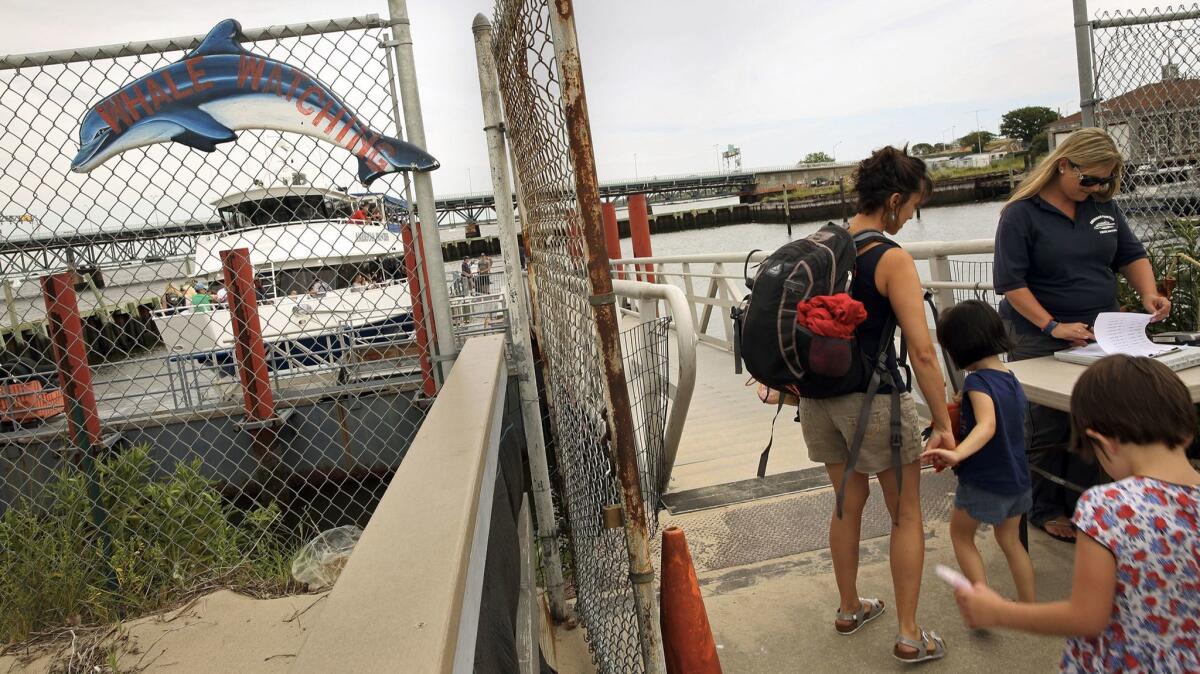
Long-neglected industrial neighborhoods like Williamsburg now sport luxury glass condominiums along the water. Walking paths on the East River and the Hudson have made the waterfront more publicly accessible.
A number of nonprofit organizations, including Malinowski’s, are capitalizing on the momentum to advance marine conservation and restoration.
The Billion Oyster Project aims to restore 1 billion oysters to the harbor by 2035. Through the project, students at the Urban Assembly New York Harbor School, a public high school, build, install and monitor oyster beds.
Malinowski said that since beginning the work in 2013, his students have seen a dramatic increase in the diversity of animals underwater, including sponges, anemones, shrimp and crab.
But some days Mother Nature stays hidden. On board the American Princess, three hours into the four-hour cruise, no animals had appeared. The rain, at least, had stopped, and people stood in the sun, waiting expectantly.
Then the captain spoke over the microphone. “Looks like we have a pod of bottlenose dolphin out here,” he said, slowing down the boat.
There they were, near the Verrazano-Narrows Bridge connecting Brooklyn and Staten Island. The creatures jumped in and out of the water four, five or six at a time, surreal against the backdrop of the Empire State Building and Manhattan skyline.
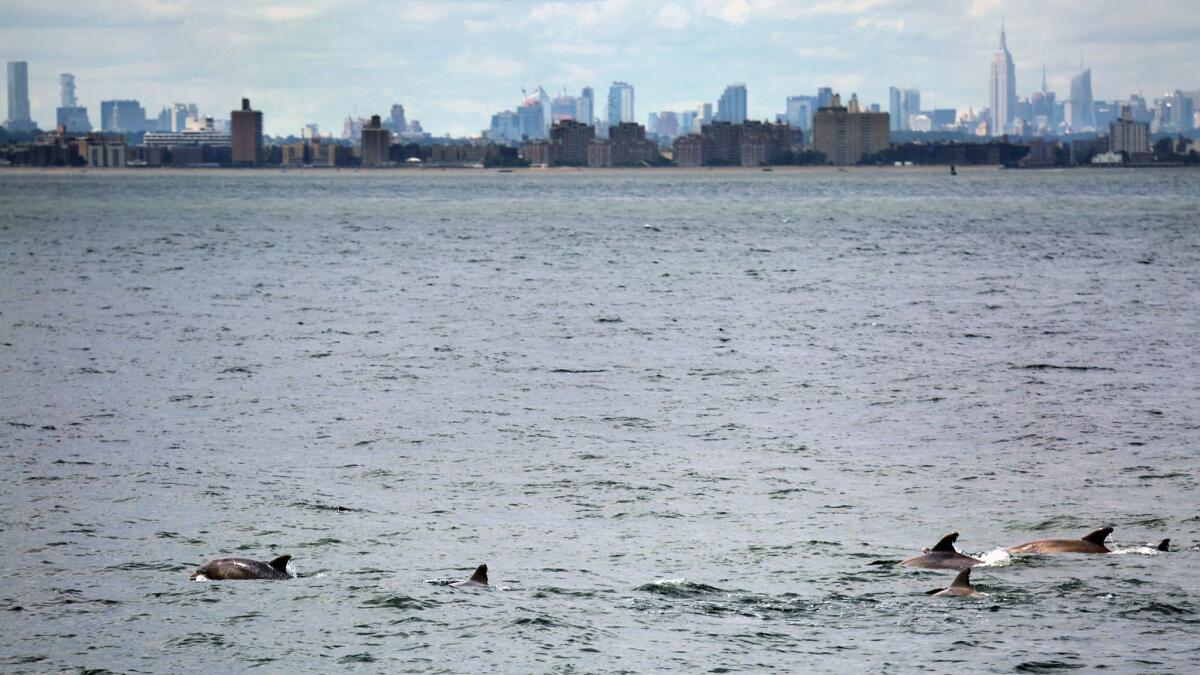
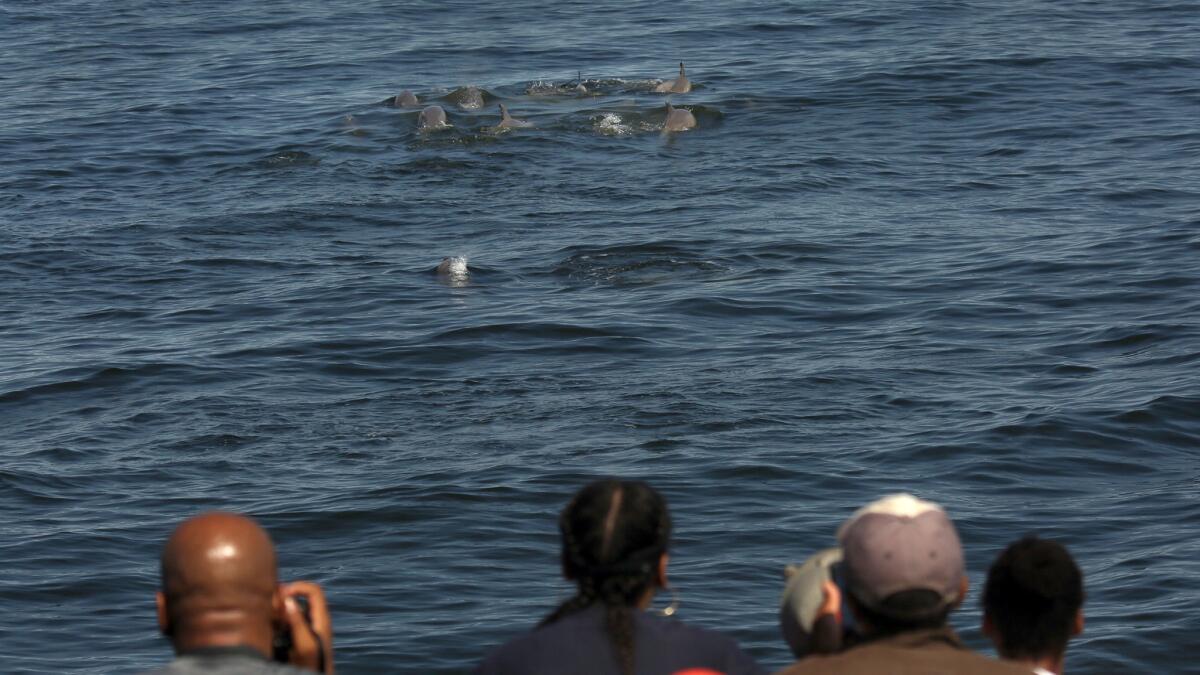
Passengers lined up along the outside decks, training their cameras and telephoto lenses on the water. Giddy kids oohed and aahed.
At first the dolphins were spotted on one side of the vessel, then the other. Soon they were at the bow and aft as well. “I’d say there are maybe 40,” Granton said. A few minutes later, she revised her estimate. “Maybe 60,” she said. Some minutes later, the count rose to 75.
Later, on the way back to shore, Granton picked up the microphone again — this time urging people to avoid using plastic straws, bags and balloons that can suffocate or poison animals in the water.
Even as they celebrate the presence of marine life in New York, environmentalists remain wary of threats.
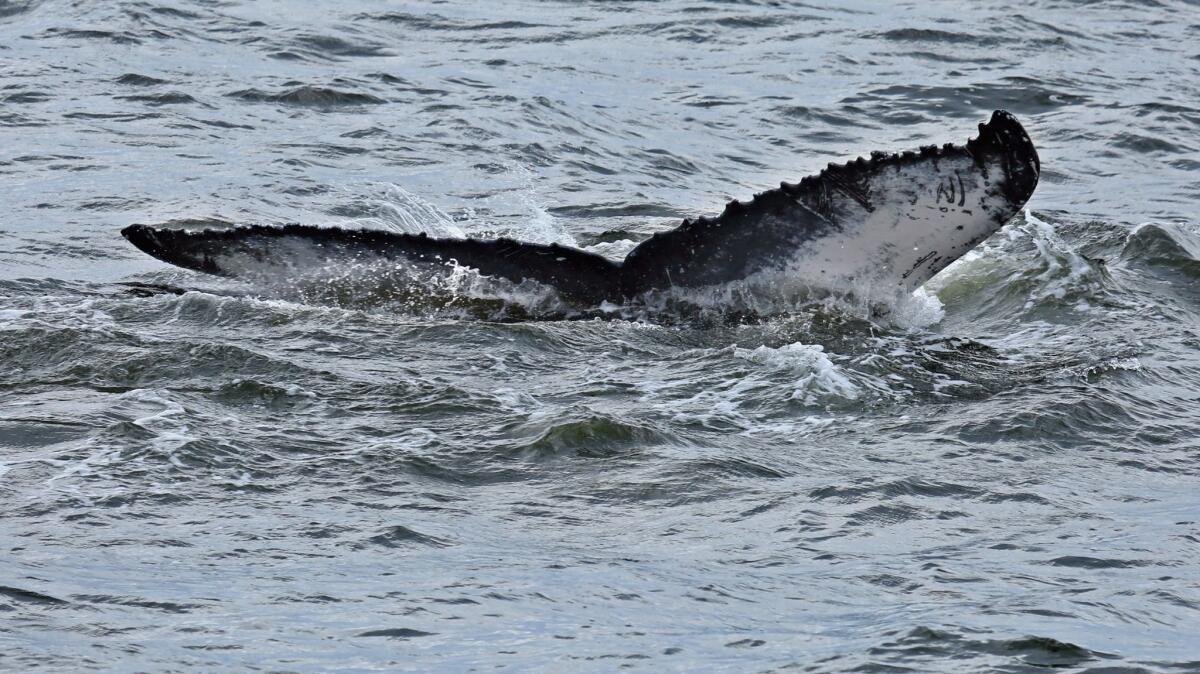
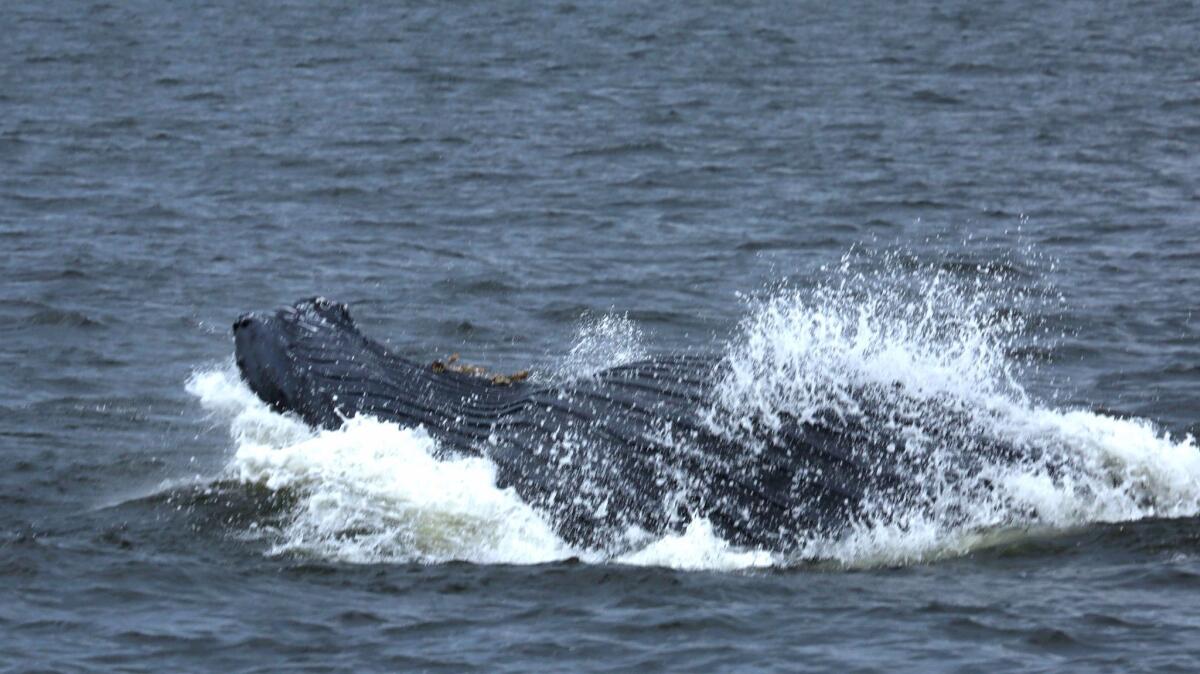
Since January 2016, 50 humpback whales have died along the Atlantic Coast from North Carolina to Maine in what scientists are calling an “unusual mortality event.” The deaths have not all been explained, but at least 10 whales had wounds suggesting vessel strikes.
In addition to ship collisions, which are of particular concern in commercial waterways, loud noises from wind turbines and oil and gas drilling can disorient marine mammals. Climate change may alter their habitats.
For the time being, though, the whale watching continues.
A few weeks after the dolphin sightings, the American Princess was again out on the water. After an hour and a half, someone saw a spout. It was a humpback, about 40 feet long. It rolled over, displaying its striated underside. More oohs and aahs.
A fin emerged, and then the fluke — the whale’s equivalent of a fingerprint.
This was a new whale to Gotham’s humpback catalog, but already it had local credibility. Black markings against the white on its upper right fluke unmistakably resembled the letters “NJ.”
Twitter: @AgrawalNina
ALSO
Trump administration to reconsider protections for rare sage grouse
Tillerson, at Arctic meeting, signs document affirming need for action on climate change
More to Read
Sign up for Essential California
The most important California stories and recommendations in your inbox every morning.
You may occasionally receive promotional content from the Los Angeles Times.

